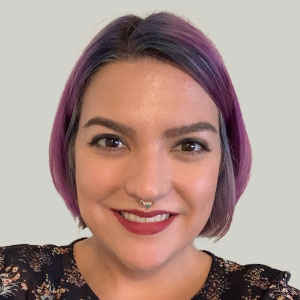Arginine tango
As a means to evade the host immune response, S. aureus uses an enzyme called oleate hydratase, or OhyA, to inactivate antimicrobial unsaturated fatty acids in the membrane that would otherwise inhibit bacterial growth. Research scientists at St. Jude Children’s Research Hospital reported today the structure and catalytic mechanism of OhyA.
Christopher Radka of St. Jude’s Department of Infectious Diseases describes the research during a presentation Tuesday at 2 p.m. EDT at the 2021 ASBMB Annual Meeting, held in conjunction with the Experimental Biology conference.
Radka and colleagues used X-ray crystallography to determine the structure of OhyA. Solving and evaluating multiple OhyA crystal structures highlighted a coordinated dance that occurs between key arginine residues and the unsaturated fatty acid substrate in the active site of the enzyme, a process facilitated by the nucleotide cofactor FAD.

In this dance, the substrate is first guided into the binding tunnel by the oleate carbonyl of OhyA, then encounters its first arginine dance partner (Arg81) at the entrance of the active site. FAD binding then triggers the rotation of Arg81 that guides the fatty acid as it curls into the active site. After catalysis, a second arginine (Arg78) rotates behind the fatty acid carboxyl to release the hydroxylated product from the active site.
“What’s novel about the (active site) is how these conserved arginines guide the substrate through the donut-shaped active site,” Radka said. “Here, the arginines dance like two partners in a tango.”
This highly choreographed dance controls how the fatty acid substrate moves into and out of the active site. “In this coordinated tango at the active site, the FAD is the dramatic third character whose role is to come in and advance the dance so the chemistry can occur,” Radka said.
In this reaction, FAD remains oxidized and unconsumed. This quality is advantageous for industrial biotechnology research looking to use OhyA; FAD-dependent reactions often consume FADH2 and require continued starting product, which can be costly.
Future goals for this research include determining the structural elements required for S. aureus OhyA to remove antimicrobial fatty acids from the membrane.
Enjoy reading ASBMB Today?
Become a member to receive the print edition four times a year and the digital edition monthly.
Learn moreGet the latest from ASBMB Today
Enter your email address, and we’ll send you a weekly email with recent articles, interviews and more.
Latest in Science
Science highlights or most popular articles

The science of staying strong
Muscles power every movement, but they also tell the story of aging itself. Scientists are uncovering how strength fades, why some species resist it and what lifestyle and molecular clues could help preserve muscle health for life.

Bacteriophage protein could make queso fresco safer
Researchers characterized the structure and function of PlyP100, a bacteriophage protein that shows promise as a food-safe antimicrobial for preventing Listeria monocytogenes growth in fresh cheeses.

Building the blueprint to block HIV
Wesley Sundquist will present his work on the HIV capsid and revolutionary drug, Lenacapavir, at the ASBMB Annual Meeting, March 7–10, in Maryland.

Gut microbes hijack cancer pathway in high-fat diets
Researchers at the Feinstein Institutes for Medical Research found that a high-fat diet increases ammonia-producing bacteria in the gut microbiome of mice, which in turn disrupts TGF-β signaling and promotes colorectal cancer.

Mapping fentanyl’s cellular footprint
Using a new imaging method, researchers at State University of New York at Buffalo traced fentanyl’s effects inside brain immune cells, revealing how the drug alters lipid droplets, pointing to new paths for addiction diagnostics.

Designing life’s building blocks with AI
Tanja Kortemme, a professor at the University of California, San Francisco, will discuss her research using computational biology to engineer proteins at the 2026 ASBMB Annual Meeting.

